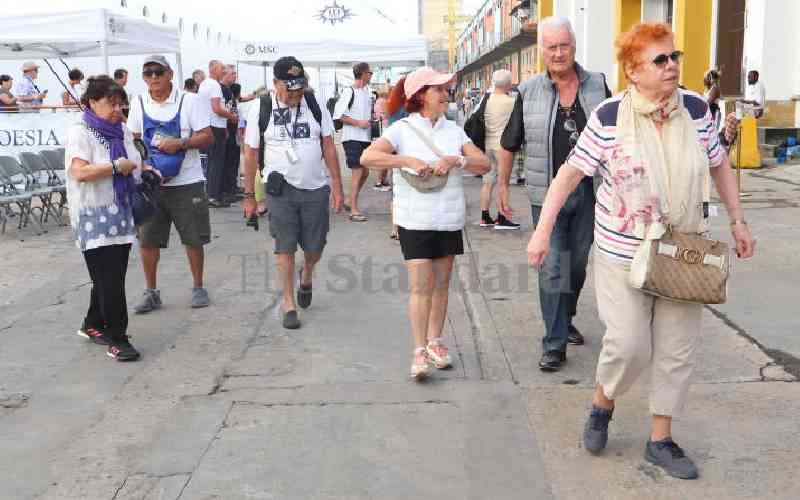MICHAEL ORIEDO visited North Cyprus, a tiny island nation that is rich in culture
‘Alluring’ is the word that best attempts to describe the Turkish Republic of Northern Cyprus (TRNC). This tiny nation that separated from Cyprus in 1983 is irresistible, with its fascinating historical and religious sites.
TRNC is mainly inhabited by Turkish Cypriots, while Cyprus is home to Greek Cypriots. North Cyprus borders the Mediterranean Sea and Cyprus, which is 64km from the coast of Turkey, 96km from Syria and 400km from Egypt.
Thousands of tourists flock to this island to visit religious and historical sites. Our adventure starts at St Barnabas Monastery in Salamis Town, Famagusta District, which borders TRNC’s capital, Nicosia. The facility houses a museum, a monastery — now an archaeological site — and a chapel, where the remains of St Barnabas lie.
The tomb is a favourite for many pilgrims. On the other hand, the farm implements, weapons and kitchenware and other pre-historic items in the museum are a glimpse of life in ancient Cyprus.
“St Barnabas was one of the founders of the Greek Orthodox Church and the patron saint of Cyprus. He was born to a Jewish family of the Levi clan, from which priests were chosen,” explains tour guide Cem Akco.
A few kilometres from the monastery are the Salamis Ruins, which are the remains of a structure built by Romans when they ruled Cyprus and other parts of the world. There is a gymnasium, an amphitheatre and bathhouses.
“This was constructed when Salamis was a commercial, religious and entertainment hub,” Akco tells us.
The Romans used the gymnasium as a school as well as recreation centre. It remains an architectural masterpiece, despite the vagaries of time and weather. Standing in neat lines, as they did hundreds of years ago, are several porticoes and marble statues.
Architecture
There are more than 40 bathrooms, beautifully constructed with marble, showing how modern architecture has borrowed from the past. The mosaic patterns are stunning.
“The marble is very strong and can last thousands of years. Legend has it that the Roman authorities imported it from Egypt,” we are informed.
Away from the bathrooms is a magnificent amphitheatre with a seating capacity of 15,000, where the people of Salamis gathered to unwind.
“This is where people met — both rulers and subjects — to watch plays that included tragedies and comedies, as well as other performances. They would sit depending on their social status: The rulers and the rich in the front seats made of marble, and the ‘commoners’ behind them,” explains Akco.
Our next stop is St Nicholas Cathedral or Lala Mustafa Pasha Mosque, also in Famagusta, which is regarded as a North Cyprus centre of history and culture.
Stay informed. Subscribe to our newsletter
This cathedral was originally built in 1329 and served as a Catholic church until it was converted to a mosque in 1571, during the rule of the Ottoman Empire.
Some 50 kilometres from the site is the Karpaz Peninsula, one of the most famous geographical features in Northern Cyprus, a must-visit for tourists. From here, one can see the country’s famed golden beaches that stretch several kilometres.
Away from the beaches, Karpaz, which is a protected area, is home to wild donkeys, a symbol of TRNC and Cyprus.
“The donkeys used to be very many, but their numbers have been dwindling over the years. Sometimes you can come to Karpaz and fail to see them,” Akco says.
We are fortunate to see some of these endangered creatures.
Karpaz also hosts the Monastery of St Andreas, constructed in 6000BC by the Greek Orthodox. The monastery, located at the tip of the peninsula, is recognised as a sacred site, and hundreds of tourists flock here for prayers and to wash themselves with the ‘holy’ water.
For those used to the skyscrapers of Nairobi, it is ‘weird’ that in Nicosia, there are countable tall buildings.
“The tall buildings were built recently, but authorities have preserved ancient buildings for posterity. The medieval buildings have been renovated and are used by businesspersons as shops,” explains Gizem Kavaz, one of our hosts.
Another interesting place is the buffer zone that separates North Cyprus from the South. The two nations’ citizens are free to cross and live on either side.
Away from religious and historical sites, North Cyprus cuisines include molohiya (a mucilaginous green vegetable), kolokas (cocoyams), pirohu (pastry parcels filled with cheese), and herse (wheat and ground meat. Cheese accompanies many meals.
 The Standard Group Plc is a
multi-media organization with investments in media platforms spanning newspaper
print operations, television, radio broadcasting, digital and online services. The
Standard Group is recognized as a leading multi-media house in Kenya with a key
influence in matters of national and international interest.
The Standard Group Plc is a
multi-media organization with investments in media platforms spanning newspaper
print operations, television, radio broadcasting, digital and online services. The
Standard Group is recognized as a leading multi-media house in Kenya with a key
influence in matters of national and international interest.
 The Standard Group Plc is a
multi-media organization with investments in media platforms spanning newspaper
print operations, television, radio broadcasting, digital and online services. The
Standard Group is recognized as a leading multi-media house in Kenya with a key
influence in matters of national and international interest.
The Standard Group Plc is a
multi-media organization with investments in media platforms spanning newspaper
print operations, television, radio broadcasting, digital and online services. The
Standard Group is recognized as a leading multi-media house in Kenya with a key
influence in matters of national and international interest.








